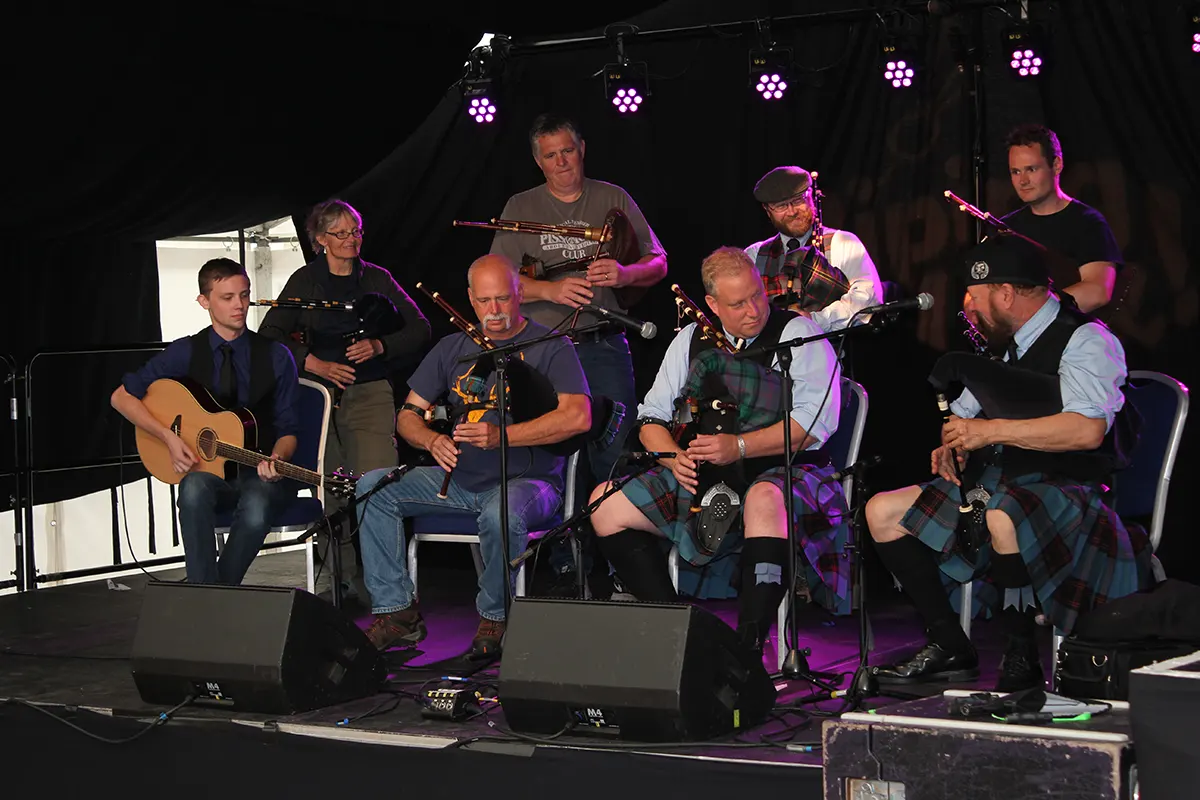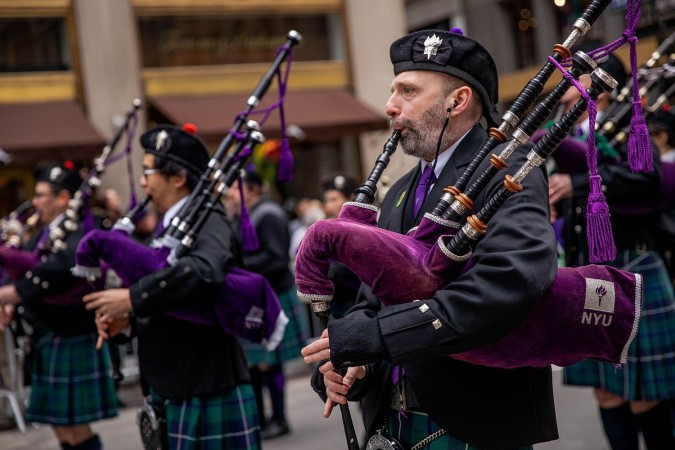A Short History of the Bagpipe

If you have ever gone to a Highland Games or a local parade, you might have heard Scotland’s famous national instrument, the Highland bagpipe. Gaelic speakers call it the ‘Phìob Mhòr’. To understand any instrument, particularly one so culturally connected, it is important to know something of its historical background. The bagpipe is an instrument of some antiquity, an instrument which has its origins in the Middle East and evolved alongside early European civilization. The ‘Oxford History of Music states that the first documented bagpipe can be found on a Hittite slab at Eyuk. This sculpture has been dated to 1000 BCE, so we have historical evidence that some form of a bagpipe has been played for at least the last 3,000 years. Around 400 BC, an Athenian poet ridiculed the pipers of Thebes, an enemy of Athens, for playing pipes made of dogskin with chanters made of bone. Let us also remember that Chaucer makes mention of pipes when he wrote ‘The Canterbury Tales’ between 1387 and 1400. It has been argued that the pipes arrived in Scotland from Ireland, or that the instrument was brought by the Romans. However, these days the prominent theory seems to be that the pipes simply came up the Atlantic coast. Certainly, the Spanish Gaita and the Breton Veuze are very similar instruments and lend strong support to this theory.
Scotland’s earliest depiction may be a 15th-century stone carving depicting an angel playing a bagpipe in Rosslyn Chapel. By the 18th Century, the bagpipe had usurped the harp to become a major icon of Scottish national identity. “The Bagpipe is, perhaps, the only national instrument in Europe. Every other is peculiar to many countries, but the Bagpipe to Scotland alone.” This statement was published by Donald MacDonald (1767-1840), born in Trotternish, Skye, in the preface of his 1819 Piobaireachd collection. In actuality, many countries in Europe and the Middle East have their own types of pipes on which they play the traditional music from their culture. While Donald MacDonald may not be accurate in his statement, we can certainly see the fierce pride Scots have in their national instrument.
Regardless of their origin, the earliest bagpipes were very simple reed instruments. In each country, the basic instrument was very similar. They comprised of a chanter, often a single drone, and a blowpipe, and were attached to a bag. The bagpipe we’re most accustomed to hearing at the Highland games is the Highland pipe. These pipes have a chanter with a nine-note range, a blowpipe, two tenor drones, a bass drone, and a bag made of cow, sheep, or goat skin. Other common variants of the Highland pipe are the 3/4 size pipe, and the Parlour pipe. In addition, there is a parallel Lowland piping tradition involving the Smallpipe, the Borderpipe, and the Pastoral pipe. We are, indeed, very fortunate to have such a rich musical history in Scotland.
One of the most common things that you hear people say about Scottish music is the emotional effect of the pipes. Where else might one find an instrument which can lull children to sleep with Gaelic lullabies, make feet dance uncontrollably, or lift the heart in life’s most difficult moments? With such a wonderful instrument, of which Scots are so proud, it is little wonder why it has become so popular worldwide.
 Members of Catamount Pipe Band performing at the National Piping Centre in Glasgow, Scotland
Members of Catamount Pipe Band performing at the National Piping Centre in Glasgow, Scotland An example of an early Donald MacDonald set of Highland pipes (approx. 1820s)
An example of an early Donald MacDonald set of Highland pipes (approx. 1820s) An example of an early Donald MacDonald set of Highland pipes (approx. 1820s)
An example of an early Donald MacDonald set of Highland pipes (approx. 1820s) Catamount Pipe Band performing at the World Pipe Band Championships in 2018
Catamount Pipe Band performing at the World Pipe Band Championships in 2018 15th century stone carving from Rosslyn Chapel of an angel playing a bagpipe
15th century stone carving from Rosslyn Chapel of an angel playing a bagpipe An example of a Parlour pipe
An example of a Parlour pipe






